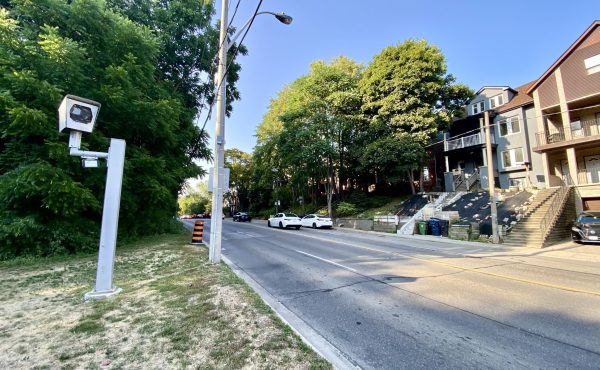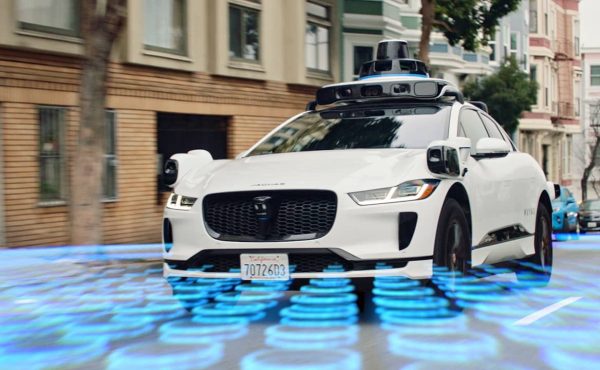
NEW YORK — In a city where pedestrian traffic rivals that of the vehicular congestion it’s not uncommon for the mass of walkers to spill out on to the streets in an attempt to negotiate the most efficient path. With most of Manhattan’s blocks being constructed on the grid system and with a majority of streets being one-way, negotiating traffic is relatively easy. It’s not until you encounter the diagonal streets of mid and lower Manhattan that complications in pedestrian and vehicular interactions begin to arise. In the last three years, in two particularly expansive triangular intersections in the meatpacking district of Chelsea, three pedestrians have been killed and numerous injured.
In an attempt to mitigate pedestrian/vehicular interactions plans have been put forth to redesign these two problematic intersections. The ones in question are the 9th Avenue-Hudson-14th Street (shown above) intersection and the 9th Avenue-Gansevoort-Little 12th Street crossroads (shown below). With help from local residents groups, the New York City Transportation Department decided to create Woonerfs (also known as naked or shared streets), a Dutch-creation which blurs the line between pedestrian and vehicular zones. Working with the existing cobblestone, the streets will be narrowed and raised to the level of the sidewalks, eliminating curbs and using landscape elements such as planters to create some definition of space. The elevation change and use of textured materials signals to the drivers that they are entering a zone which is not clearly defined as pedestrian or vehicular. Reminiscent of many European squares this type of program has proven to be effective in slowing traffic, improving pedestrian movement, and reducing traffic accidents and fatalities.
click on photo to see larger version
In an initial effort to implement the plan, 9th Avenue has been narrowed expanding the pedestrian realm. It is expected to take five years to completely transform the intersections so in the interim, a program of lane narrowing has been put in place allowing pedestrians to reclaim some of the roadway. The change was immediate. Without any hesitation, people spilled out onto the cobble stone, some gathering in groups to observe the architecture from better vantage points, others to maneuver around the slow moving groups of people. Some café’s immediately opened up expanded patios ringed with planters of large palm trees. Not only was the change in pedestrian traffic noticeably different, but the vehicular traffic has begun to change. As people move further away from the building edge and out into these undefined urban spaces the traffic slows, recognizing the undefined nature of the space.
Instead of regulating these intersections further with planted medians, stop signs and traffic lights, a different pedestrian-oriented approach is being experimented with. And it appears to be working. It will be interesting to follow the developments of these intersections as they grow into a hybrid pedestrian/vehicular zone.
photos by Joe Clement
– – – – – – – – – – –
Joe Clement, a long-time Spacing magazine contributor, has just left his hometown of Toronto, and is now living in New York. He will be our Big Apple correspondent covering public space issues. If there are any particular ideas or topics you would like him to cover, leave a comment or email Spacing Toronto.





6 comments
Wasn’t something like a woonerf proposed for the Front Street stretch along Union Station?
I believe its still on the table, Michael. Now, when improving the public spaces in front of Union will take place is another story.
If you look at Herald Square, you will see some interesting street narrowings done a few years ago. Because nothing was done other than putting out planters, pedestrians tend to think the extra width is a bike lane or other space and avoid walking in it, despite the crowds. It doesn’t help that vendors also use the extra width as their back office space.
Here in the UK, a similar scheme to woonerfs have been implemented around the country, called home zones. Unfortunately, actual reshaping of streets and sidewalks and street furniture proved to be too expensive to roll out nationally.
An NGO called Sustrans runs a project called DIY Streets which basically tries to achieve similar results, at a much lower cost. Maybe something like that could work in Toronto?
This would be great in Kensington Market! It seems like such a flexible design; some times it’s so busy with people strolling around it would be nice to be more pedestrian oriented, then again it wouldn’t prevent the big morning delivery trucks and vans from getting to the stores or stop cars from going down the streets in winter (weekdays esp.) when there are much fewer people around.
Have there ever been discussions with the City for such an idea?
I feel that part of the intrinsic quality that so many people associate with the market are the vehicles. I agree pedestrian only days are a good idea, however, banning vehicles all together would change a fundamental aspect of the market and in effect altering what makes it a destination. The energy and vibrancy of the neighbourhood exist in part due to the commotion and the hectic nature of pedestrian/vehicular interaction, which has been recognized as a positive interaction in particular situations. The Woonerf would definitely bridge the current gap between pedestrian and vehicular interactions and create a market livable both for visiting pedestrians and market owners. I think it would be a great idea to bring forth to the city, however, I suspect there won’t be any capital investments any time soon.